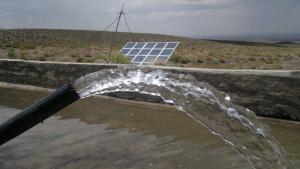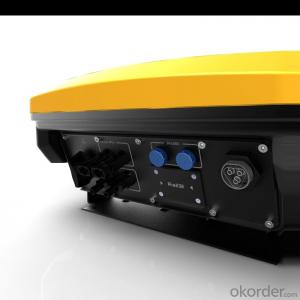Solar Micro Inverter Off-Grid
Solar Micro Inverter Off-Grid Related Searches
Led Light Bulbs For Ceiling Fixtures Led Lamps For Ceiling 42 In Ceiling Fan With Light Parts For Light Fixtures Light Projector For Christmas Grill With Led Light Bar Hanging Lights For Kitchen Bar Ceiling Lights For Sitting Room Ceiling Brackets For Lights Ceiling With Led LightsHot Searches
Aluminium Wire Mesh Manufacturers India Ceiling Fan Lowest Price Aluminium Scaffold Planks Sale Aluminium Walkway Mesh Prices Aluminum Bar Stock For Sale High Mast Light Price List Solar High Mast Light Specification High Mast Light Specification 6061 Aluminum Bar Stock Price Aluminum Bar Stock Price Stage Light Price Solar Inverter Fault Light Led Light Manufacturers Aluminum Round Bar Stock Sizes Aluminum Round Bar Stock Near Me Ceiling Fan Lowest Price Aluminum Flat Bar Stock Near Me Aluminum Bar Stock Sizes Aluminum Bar Stock Suppliers Aluminum Bar Stock Near MeSolar Micro Inverter Off-Grid Supplier & Manufacturer from China
Okorder.com is a professional Solar Micro Inverter Off-Grid supplier & manufacturer, offers integrated one-stop services including real-time quoting and online cargo tracking. We are funded by CNBM Group, a Fortune 500 enterprise and the largest Solar Micro Inverter Off-Grid firm in China.Hot Products
FAQ
- Yes, a solar inverter can be used in areas with high seismic activity. However, it is essential to ensure that the solar inverter is designed to withstand seismic vibrations and has been installed using appropriate seismic-resistant mounting techniques. Special precautions and engineering considerations may be necessary to ensure the inverter's integrity and functionality during seismic events.
- A solar inverter converts direct current (DC) power generated by solar panels into alternating current (AC) power that can be used in households and businesses. It does this through a two-step process. Firstly, the DC power from the solar panels is converted into a high-frequency AC power using power electronic switches, usually in the form of transistors. This high-frequency AC power is then transformed into a stable AC power with the desired voltage and frequency using transformers and filters. Overall, the solar inverter ensures that the DC power generated by the solar panels is converted into a usable AC power that can be fed into the electrical grid or consumed directly.
- Yes, a solar inverter can be used in conjunction with a power optimizer. In fact, this combination is commonly used in solar power systems to optimize energy production. The power optimizer helps maximize the performance of each individual solar panel by adjusting the voltage and current levels, while the solar inverter converts the DC electricity produced by the panels into usable AC electricity for the grid. Together, they enhance the overall efficiency and output of the solar system.
- There are several advantages to using a three-phase solar inverter. Firstly, three-phase solar inverters allow for higher power output compared to single-phase inverters. This is because they distribute the power across three phases, resulting in increased efficiency and capacity. Additionally, three-phase inverters provide better voltage stability and balance across the three phases of a power grid. This is particularly beneficial in commercial or industrial settings where there may be heavy loads and varying power demands. Furthermore, three-phase solar inverters offer improved reliability and durability. They are designed to handle higher currents and can withstand higher temperatures, ensuring a longer lifespan and reducing maintenance requirements. Lastly, three-phase inverters are more cost-effective in large-scale solar installations. They allow for better utilization of available grid infrastructure, reducing transmission losses and optimizing power distribution. Overall, the advantages of using a three-phase solar inverter include higher power output, improved voltage stability, enhanced reliability, and cost-effectiveness in larger-scale installations.
- Yes, a solar inverter can be used with different communication protocols. Many modern inverters are designed to be compatible with various communication protocols such as Modbus, RS485, Wi-Fi, or Zigbee. This allows them to communicate and integrate with different monitoring systems, smart home devices, or other renewable energy components, providing flexibility and compatibility for users.
- The maximum output power of a solar inverter depends on its size and specifications. Typical residential solar inverters have a maximum output power ranging from 1 kilowatt (kW) to 10 kW, while commercial and utility-scale inverters can reach several megawatts (MW) of power output.
- When choosing the right solar inverter for your system, there are a few key factors to consider. Firstly, you need to determine the size and capacity of your solar panel system. This will help you determine the appropriate power rating for the inverter. Additionally, consider the type of inverter you need - string inverters are suitable for larger systems, while microinverters or power optimizers may be more suitable for smaller or shaded systems. It is also important to check the inverter's efficiency, warranty, and compatibility with your solar panels and battery storage, if applicable. Lastly, consider your budget and any specific features you may require, such as monitoring capabilities or grid-tied functionality. Consulting with a professional solar installer can also provide valuable guidance in selecting the right solar inverter for your specific system.
- A solar inverter handles voltage harmonics by using filters and control algorithms to reduce or eliminate the distortion caused by harmonics in the power generated by the solar panels. These filters and algorithms help to ensure that the electricity produced by the solar panels is of high quality and compliant with the desired voltage standards.













































